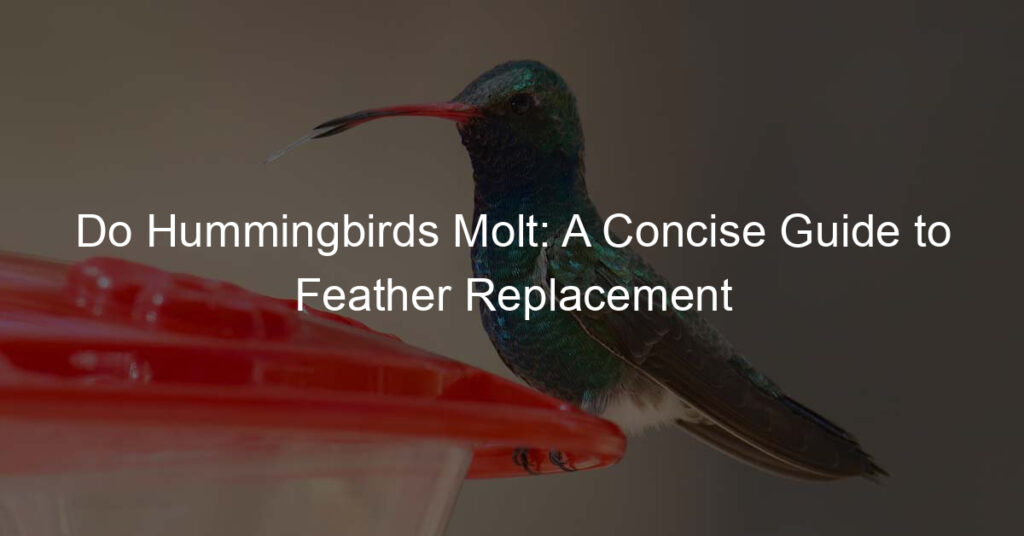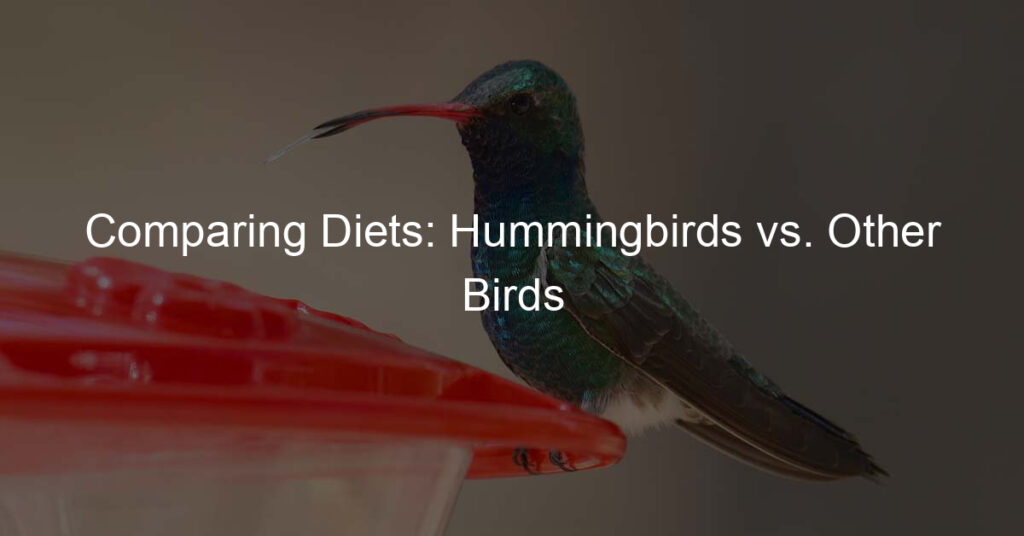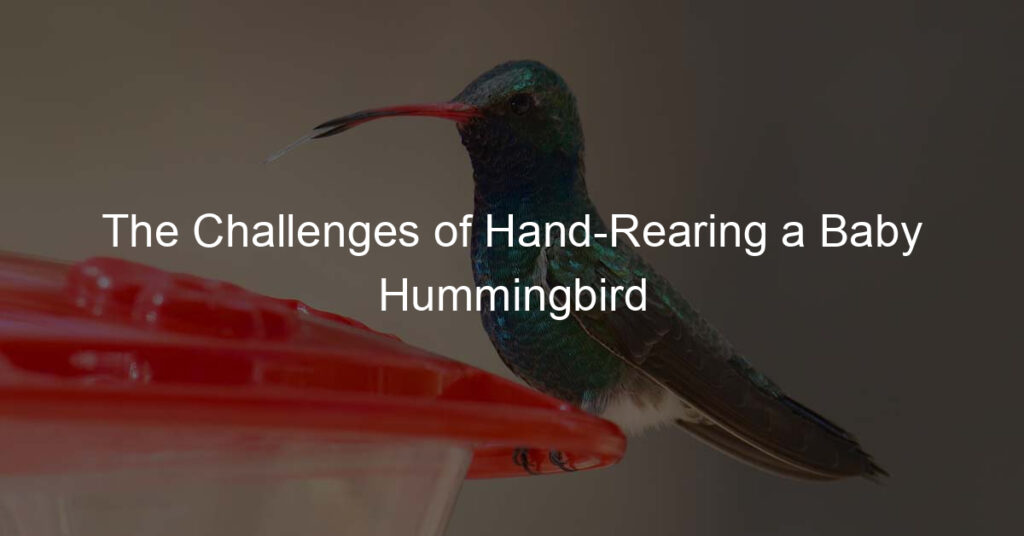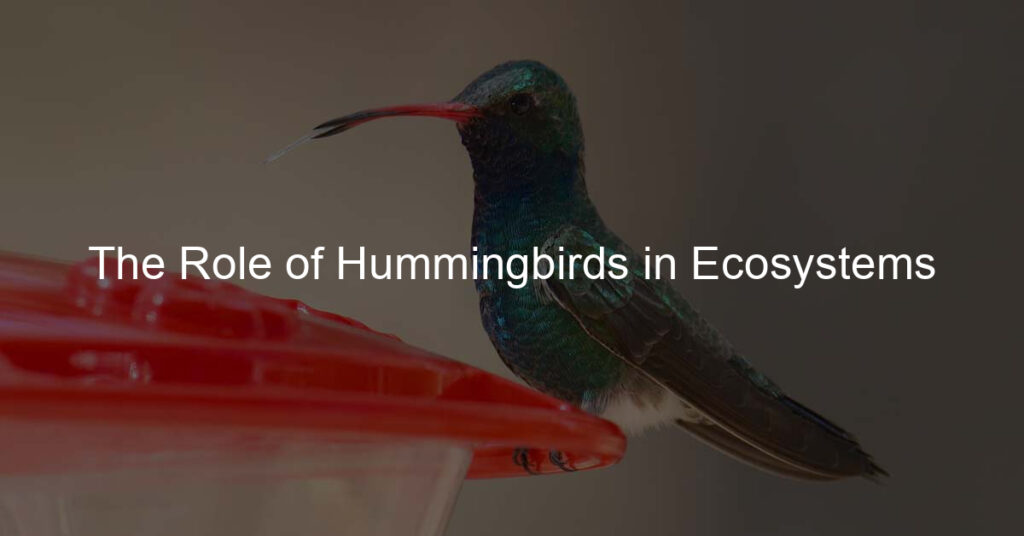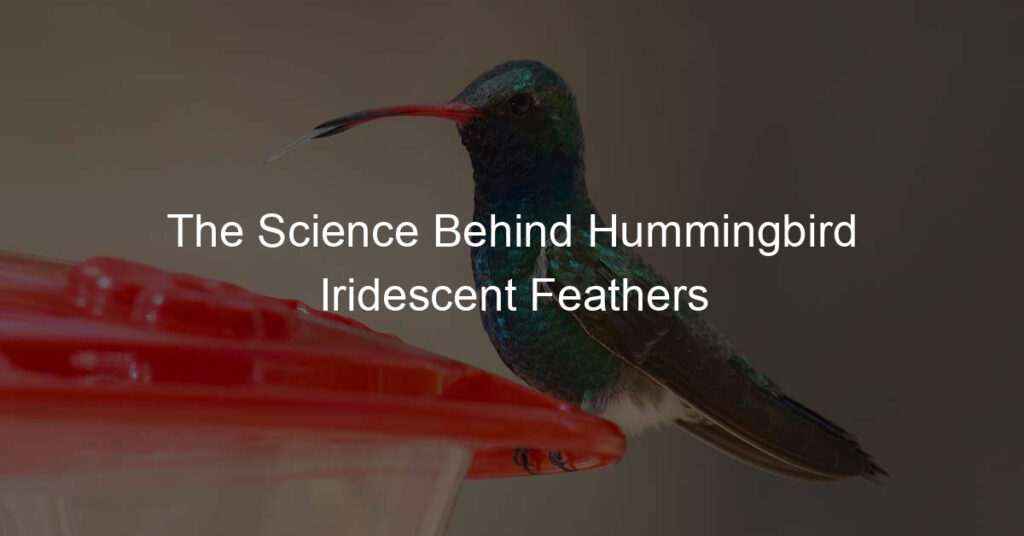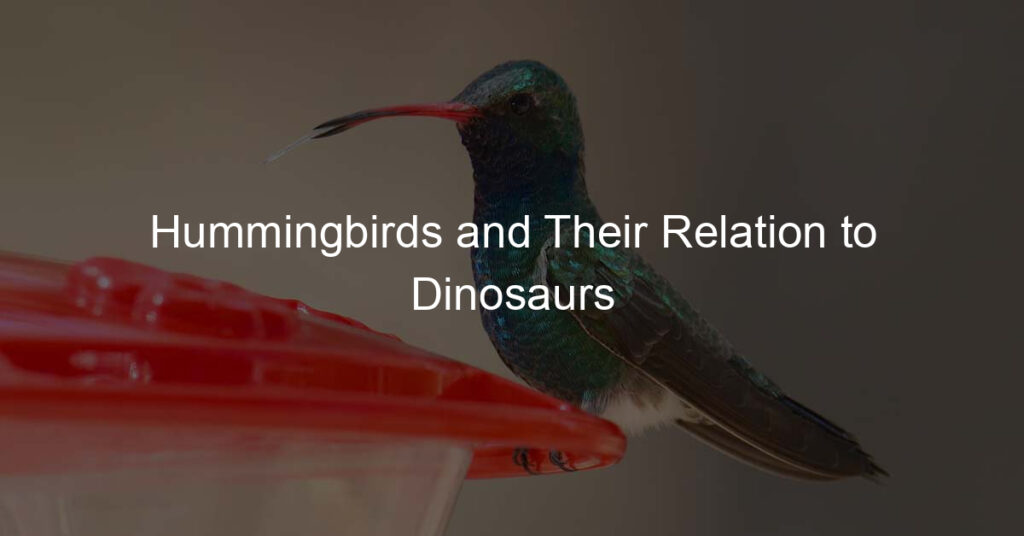Introduction: Unveiling the Mystery of Hummingbirds
Welcome to the fascinating world of hummingbirds! These tiny, vibrant creatures have captivated people’s attention for centuries with their unique characteristics and behaviors. In this blog post, we will delve into the mystery of hummingbirds, providing you with an overview of the species and highlighting their unique characteristics.
Overview of the hummingbird species
There are over 300 different species of hummingbirds, making them one of the most diverse bird families in the world. They are native to the Americas, with the majority of species living in the tropical rainforests of South and Central America. Some species, like the Ruby-throated Hummingbird, migrate to North America during the warmer months. Learn more about the different species of hummingbirds on Wikipedia.
Unique characteristics of hummingbirds
Hummingbirds are known for their small size, bright colors, and incredible flying abilities. They are the only birds that can fly backwards and hover in mid-air, thanks to their rapid wing-flapping speed. They can flap their wings up to 200 times per second! Hummingbirds also have a long, thin beak that they use to drink nectar from flowers. Their high-energy diet requires them to eat up to three times their body weight in food every day. Discover more unique characteristics of hummingbirds on Wikipedia.
Stay tuned as we explore more about the life and habits of hummingbirds in the following sections, including their molting and migration patterns, sleeping habits, habitats, mating behaviors, and lifespan.
Do Hummingbirds Molt?
Just like other birds, hummingbirds also undergo a process known as molting. This is when they shed their old feathers and grow new ones. Let’s delve deeper into this fascinating process.
Understanding the molting process
Molting is a natural process that all birds go through. It’s a way for them to replace old, worn-out feathers with new ones. This process is vital for their survival as it helps them maintain their ability to fly and keep warm. For hummingbirds, molting usually happens once or twice a year. It’s a gradual process that can take several weeks to complete.
Signs of a molting hummingbird
Spotting a molting hummingbird can be a bit tricky, but there are a few signs you can look out for. One of the most obvious signs is the appearance of patchy feathers. You might notice that some feathers look shorter than others, or there might be gaps in the bird’s plumage. Another sign is a change in the bird’s behavior. During molting, hummingbirds might become less active and spend more time resting and feeding to conserve energy.
In conclusion, molting is a normal and essential part of a hummingbird’s life. It’s a process that helps them stay healthy and adapt to their environment. So, the next time you see a hummingbird with patchy feathers, don’t worry. It’s probably just going through its molting process.
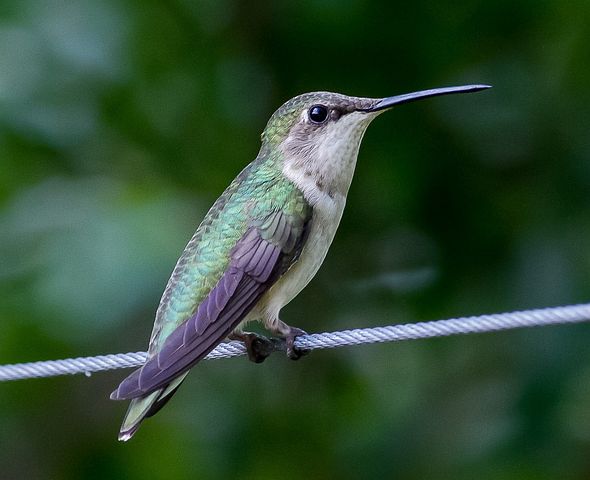
Why Do Hummingbirds Molt?
Hummingbirds, like all birds, go through a process called molting. This is when they shed their old feathers and grow new ones. But why do hummingbirds molt? There are two main reasons:
Adaptation to changing seasons
Hummingbirds molt to adapt to the changing seasons. As the weather changes, so do the needs of these tiny creatures. In colder seasons, they need thicker, more insulated feathers to keep warm. When it’s warmer, they require lighter feathers for easier flight. Molting allows them to replace their feathers to suit their environment better.
Preparation for migration
Another reason hummingbirds molt is to prepare for migration. These birds travel long distances during migration, and they need to be in top shape for this journey. Old, worn-out feathers can slow them down and make flying more difficult. By molting, they can grow fresh, new feathers that are better suited for the long flight ahead.
In conclusion, molting is a crucial process for hummingbirds. It allows them to adapt to changing seasons and prepare for migration, ensuring their survival in different conditions. To learn more about this fascinating process, you can visit the Wikipedia page on molting.
Do Hummingbirds Migrate?
Hummingbirds, known for their vibrant colors and rapid wing beats, are a fascinating species. One of the most intriguing aspects of their behavior is migration. But do hummingbirds actually migrate? The answer is yes, they do. Let’s delve into the details of hummingbird migration.
Migration patterns of hummingbirds
Hummingbirds typically migrate between their breeding and wintering grounds. For instance, the Ruby-throated Hummingbird, the most common species in North America, spends its winters in Central America or Mexico and returns to the eastern United States and Canada for breeding in the summer. This journey spans over 500 miles, which is quite remarkable considering the small size of these birds.
Factors influencing hummingbird migration
Several factors influence the migration of hummingbirds. The primary factor is the availability of food. Hummingbirds feed on nectar from flowers, and they migrate to areas where these flowers are in bloom. Changes in daylight also play a significant role. As the days get shorter in fall, hummingbirds start their journey southward. Similarly, as the days lengthen in spring, they begin their northward journey. Weather conditions, particularly temperature, also influence hummingbird migration.
In conclusion, hummingbirds do migrate, and their migration patterns are influenced by several factors, primarily food availability and changes in daylight. These tiny birds undertake long journeys twice a year, showcasing their incredible endurance and adaptability.

How Do Hummingbirds Prepare for Migration?
Hummingbirds, these tiny, vibrant creatures, have a unique way of preparing themselves for the long journey of migration. Let’s delve into their fascinating preparation process.
1. Increased Food Intake
Before embarking on their migration journey, hummingbirds start consuming more food than usual. This is to build up their fat reserves, which act as fuel during their long, strenuous flight. A hummingbird can increase its body weight by nearly 40% during this period. It’s like a human preparing for a marathon by loading up on carbohydrates!
2. Molting Process
Another crucial part of a hummingbird’s migration preparation is the molting process. Molting is when birds shed their old feathers to grow new ones. For hummingbirds, this usually happens after the breeding season and before migration. The new feathers are stronger and more efficient for the long flight ahead. It’s like getting a new set of tires before a long road trip!
So, the next time you see a hummingbird buzzing around your garden, remember the incredible journey it’s preparing for. It’s a testament to the resilience and adaptability of these tiny creatures.
Do Hummingbirds Sleep?
Many people wonder if these tiny, energetic birds ever take a break. The answer is yes, hummingbirds do sleep! But their sleeping habits are quite unique and fascinating. Let’s delve into the world of sleeping hummingbirds.
Sleeping habits of hummingbirds
Unlike humans and many other animals, hummingbirds don’t just sleep – they go into a deep sleep-like state called torpor. During torpor, a hummingbird’s body temperature drops, its heart rate slows down, and its metabolism decreases to one-fifteenth of its normal rate. This allows the bird to conserve energy while it’s not feeding. Torpor is so deep that a hummingbird might appear dead, but it will wake up when it’s time to feed again.
Hummingbirds usually enter torpor at night and wake up at dawn. They find a safe perch where they can hang upside down, fluff up their feathers for insulation, and then slip into torpor. It’s a fascinating survival strategy that allows these tiny birds to thrive in various environments.
How long do hummingbirds sleep?
The duration of a hummingbird’s sleep depends on various factors, including the species, the environment, and the availability of food. In general, hummingbirds spend about 10-12 hours in torpor each night. However, in extreme conditions, a hummingbird can remain in torpor for a longer period. For instance, during a cold night or when food is scarce, a hummingbird might extend its torpor to conserve more energy.
It’s important to note that waking up from torpor is a slow process for hummingbirds. It can take up to an hour for a hummingbird to fully wake up and be ready to fly and feed again. During this time, the bird’s body temperature gradually rises, and its heart rate and metabolism increase to normal levels.
In conclusion, hummingbirds do sleep, but in a way that’s quite different from what we’re used to. Their unique sleeping habits are just another reason why these tiny birds are so fascinating and beloved.
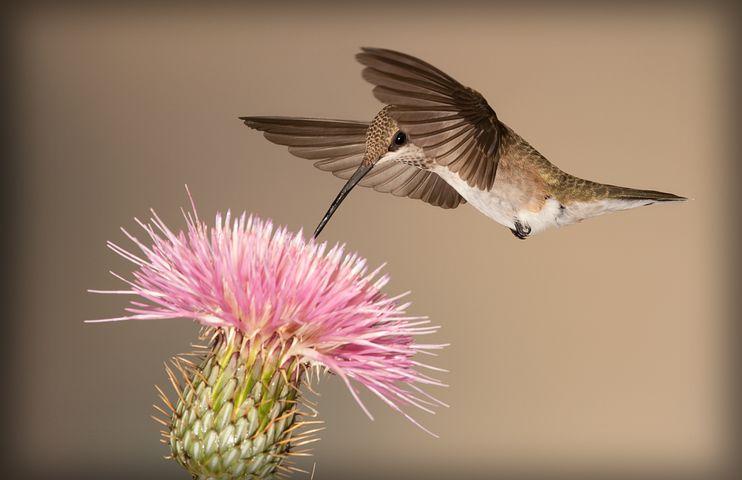
Where Do Hummingbirds Live?
Hummingbirds, known for their vibrant colors and rapid wing movement, are found in a variety of locations across the globe. They are most commonly found in the Americas, from Alaska to Tierra del Fuego. However, their habitats and their ability to adapt to different environments are as diverse as their species.
-
- Habitats of Hummingbirds
Hummingbirds are native to the Western Hemisphere, and they inhabit a wide range of environments. They can be found in the high Andes Mountains, the lowlands of the Amazon Rainforest, and even in the deserts of Arizona. In North America, hummingbirds are most commonly seen during the summer months, as they migrate north to take advantage of the abundant food resources.
Hummingbirds prefer habitats where they can find plenty of flowers for nectar, their primary food source. They also need places to perch and rest, as well as materials for building nests. Therefore, gardens, meadows, and forests with a variety of flowering plants are ideal habitats for these birds.
-
- Adaptation to Various Environments
Hummingbirds are incredibly adaptable creatures. They have evolved to survive in a variety of climates and environments. For instance, some species have adapted to live in extremely high altitudes, where the air is thin and cold. The Andean Hillstar hummingbird, for example, lives in the Andes Mountains at altitudes of up to 16,000 feet.
Hummingbirds have also adapted to live in desert environments. The Costa’s Hummingbird, native to the deserts of the Southwestern United States and Mexico, has adapted to the extreme heat and scarcity of water. It feeds on the nectar of desert plants and conserves water by excreting a highly concentrated waste to minimize water loss.
In conclusion, hummingbirds are versatile and resilient creatures that have adapted to live in a variety of environments. Their habitats range from the high mountains to the low deserts, demonstrating their remarkable ability to thrive in diverse conditions.
Do Hummingbirds Mate for Life?
Hummingbirds, with their iridescent feathers and quick movements, are a sight to behold. But have you ever wondered about their mating habits? Do these tiny birds mate for life? Let’s delve into the fascinating world of hummingbird relationships.
-
- Mating habits of hummingbirds
Unlike some bird species that form lifelong partnerships, hummingbirds do not mate for life. The male hummingbird’s role in the mating process is solely to fertilize the eggs. Once this is done, he moves on, often seeking out other females to mate with. The female, on the other hand, is left with the responsibility of building the nest, incubating the eggs, and caring for the young ones all by herself. This might seem unfair, but it’s a common practice in the bird kingdom, especially among species like hummingbirds.
-
- Role of molting in attracting mates
Molting, the process where birds shed and regrow their feathers, plays a significant role in the hummingbird’s mating process. Male hummingbirds, in particular, undergo a transformation during the molting period. Their dull feathers are replaced with bright, iridescent ones, making them more attractive to potential mates. This dazzling display is not just for show, it’s a critical part of their mating ritual. The brighter the male’s feathers, the better his chances of attracting a female. So, in the world of hummingbirds, molting is not just about getting a new set of feathers, it’s about survival and continuation of the species.
In conclusion, while hummingbirds do not mate for life, their mating habits and rituals are complex and fascinating. From the solitary role of the male to the importance of molting in attracting mates, there’s more to these tiny birds than meets the eye.
How Long Do Hummingbirds Live?
Hummingbirds, known for their vibrant colors and rapid wing movements, have a lifespan that may surprise you. Let’s delve into the details of how long these fascinating creatures live and the factors that influence their lifespan.
Lifespan of Hummingbirds
On average, hummingbirds live for about 3 to 5 years. However, this is not a hard and fast rule. Some species have been known to live for up to 10 years in the wild! The Ruby-throated Hummingbird, for instance, holds the record for the oldest known hummingbird in the wild at 9 years and 1 month.
Factors Affecting Hummingbird Lifespan
Several factors can influence the lifespan of a hummingbird. These include:
Food Availability: Hummingbirds need to eat a lot to sustain their high metabolism. A lack of food can significantly reduce their lifespan.
Predators: Predators like cats and larger birds pose a significant threat to hummingbirds, often reducing their lifespan.
Weather Conditions: Extreme weather conditions can also impact the lifespan of hummingbirds. Cold temperatures, in particular, can be fatal.
Disease: Like all creatures, hummingbirds can fall victim to various diseases, which can shorten their lifespan.
In conclusion, while hummingbirds may not have the longest lifespan in the bird kingdom, they certainly lead fascinating lives. Their lifespan, while influenced by various factors, is a testament to their resilience and adaptability in the wild.
Conclusion: The Fascinating World of Hummingbirds
As we reach the end of our journey into the mesmerizing world of hummingbirds, let’s take a moment to revisit the key points we’ve learned about these fascinating creatures.
Recap of key points:
Hummingbirds, with their vibrant colors and rapid wing movements, are truly a spectacle to behold. We’ve discovered that these tiny birds undergo a process called molting, where they shed and regrow their feathers. We’ve also learned about their incredible migration journeys, some traveling over 2000 miles to find warmer climates. We delved into the unique sleeping habits of hummingbirds, learning that they enter a state called torpor to conserve energy. We’ve explored their habitats, spanning across the Americas, and learned about their mating habits and lifespan, which can extend up to 12 years in the wild.
Encouraging further exploration and study:
While we’ve covered a lot, there’s still so much more to learn about hummingbirds. We encourage you to continue exploring and studying these amazing creatures. You can start by visiting a local nature reserve or bird sanctuary, or even setting up a hummingbird feeder in your own backyard. There are also many resources available online, including Wikipedia, where you can delve deeper into the world of hummingbirds.
Remember, every bit of knowledge we gain about these birds helps us better understand and protect them. So, let’s keep learning and appreciating the fascinating world of hummingbirds!

